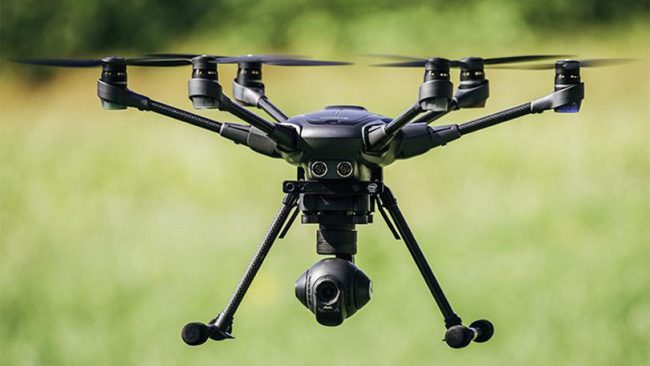The first drone policy of India has been announced by the Ministry of Civil Aviation, that makes flying Remotely Piloted Aircraft System (RPAS) or the drones in the layman’s terms legal. Previous year in November, it was mentioned that the draft regulations those belonging to the drones which has now been finalized. The directorate General of Civilian Aviation had banned the use of drones by the civilians but those changes took place from 1st of December.

The National Drone Policy would become effective from 1st of December and the several rules and regulations would be attached for the pilot. The most interesting aspect in this is the list of places where the drone would not be allowed in India.
Places Where The Drone Cannot Fly In India
Under the operating restrictions, Govt. has mandated that drones cannot be flown in these 12 locations:
ALSO READ: Stop Being Oversensitive And Enjoy Your Life Fully

- Drone cannot be flown within 5 kms from the perimeter of the airports those include Hyderabad, Bangalore, Kolkata, Chennai, Delhi and Mumbai
- Within 3 kms from the perimeter of any defense, civil and private airport (other than the list mentioned above)
- Above the Obstacle Limitation Surfaces (OLS) or PANS-OPS surfaces, whichever is lower of an operational aerodrome. The list is updated by Ministry of Civil Aviation (Height Restrictions for Safeguarding of Aircraft Operations) Rules, 2015 via Gazette of India notification GSR751(E)
- Within any permanent or temporary Prohibited, Restricted and Danger Areas including TRA, and TSA, as notified in AIP
- Within 25 kms from International Border, which includes Line of Control (LoC), Line of Actual Control (LAC) and Actual Ground Position Line (AGPL)
- Beyond 500 meters (coastal) into sea from a coast line
- Within 3 kms from the perimeter of any military installations, facilities
- Within 5 kms from the radius of Vijay Chowk in Delhi
- Within 2 kms from the radius of strategic locations, as specified by Ministry of Home Affairs
- Within 3 kms from the radius of State Secretariat Complex in State Capitals
- Drones won’t be allowed from a mobile platform like moving vehicle, ship or aircraft
- Over eco-sensitive zones around National Parks and Wildlife Sanctuaries notified by Ministry of Environment, Forests and Climate Change without prior permission.
Major Highlights of the National Drone Policy
- The drone operators need a license for flying the drone and it would cost Rs. 25000.
- The Unique Identification Number i.e. UIN is necessary for each drone which flies and would cost Rs. 1000 to get one.
- The pilots or the operators of the drones need to pass the tests those are related to the rules and regulations of flying a Remotely Piloted Aircraft System (RPAS).
- The educational requirement for the pilot is that, he should be 10th pass and must have completed 18 years of his age.
- The process application process for the license would be automated and fully digital.
- At the day time, the drones can be flown till 400 feet, and should be visible by the drone operator.
- The rules regarding the visibility of the drones can be relaxed later on.
- The drones have been divided into 5 different categories depending upon their weights.
- The drones weighing from 250 grams to 2 kgs won’t need any license or the any permission to fly.
- The drones beyond 2 kgs would require permission each time.
- The drones flying in the controlled air space need a flight plan and the Air Defence Clearance along with the Flight Information Centre (FIC) number for each flight.
ALSO READ: Know What Successful People Do Differently









